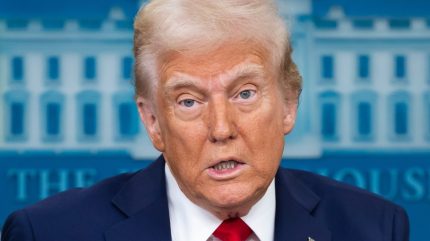
When Donald Trump descended a golden escalator at Trump Tower in New York City in 2015 to announce the launch of his first presidential campaign, it marked the beginning of a politically turbulent period.
Following his return to politics, which some observers have called the “greatest comeback” in political history, the first 100 days of ‘Trump 2.0’ have unfolded with significant impact.

Discover B2B Marketing That Performs
Combine business intelligence and editorial excellence to reach engaged professionals across 36 leading media platforms.
In a statement released on April 29 to mark the Trump administration’s first 100 days, the White House highlighted inflation statistics claiming that prescription drug prices have decreased by more than 2% since President Trump took office.
“Last month’s drop in the price of prescription drugs was the largest ever recorded,” the brief stated. However, experts are debating how much direct influence presidential policy had on those price trends.
GlobalData reviews how Trump’s cabinet picks and decision-making are influencing the healthcare industry after 100 days in office.
Tariffs and the trade war escalation
On 2 April, the Trump administration announced that it would by imposing 10% tariffs on practically all countries from 5 April.

US Tariffs are shifting - will you react or anticipate?
Don’t let policy changes catch you off guard. Stay proactive with real-time data and expert analysis.
By GlobalDataAfter an escalatory period, on 9 April, China announced 84% retaliatory tariff on all goods imported from the US, up from 34%, in response to Trump’s recent levy hikes. This action followed the US’ imposition of a 125% tariff on Chinese imports on 9 April 2025, up from 104%, further inflaming a trade war observers have deemed ‘nonsensical’ and “probably the largest [economic] shock that we’ve seen since the 1970s”.
Due to the current lack of exemptions for the pharmaceutical industry by the Chinese government, imported pharmaceutical products and vaccines will be subject to the additional tariffs.
According to GlobalData analysis, for pharma, the tariffs may disrupt drug development costs and prices as they will increase the import costs of many raw materials and active pharmaceutical ingredients. Huge tariffs on imports from China are also doubly impactful due to the nation’s current grip on drug manufacturing.
Some experts speculate that the ‘trickle down’ effect of tariffs on pharmaceuticals may also make the US a less attractive place in which to conduct clinical trials and could result in trials being shipped to other countries where investigational drugs can be produced more affordably.
Beyond the impact tariffs are liable to have on trial costs and drugs, medical devices such as CT scanners and X-ray machines, and equipment such as gowns and gloves, are also affected, putting supply and demand into question.
To mitigate these new challenges, which have impacted revenues for some of the biggest players in healthcare, some have taken a prescient approach and trimmed their workforce , scrapped their annual revenue forecasts, or, in the case of Thermo Fisher Scientific, taken steps to counter the tariffs by pledging further investment in US manufacturing.
The DOGE effect
One of the Trump administration’s key focuses in the first 100 days has been to achieve what it describes as ‘government efficiency’. In practice, this has resulted in significant staff reductions headcount cuts and the practical erasure of entire US government agencies such as the US Agency for International Development (USAID), resulting in some clinical trials being suspended until alternative funding is obtained.
Various cuts to research funding are also likely to impact the ability for academic organisations and early-stage companies in preclinical settings to move drugs into the clinic.
One of the notable actions of the Trump administration’s actions over the past 100 days in healthcare has been in the deep cuts to personnel at agencies under the US Department of Health and Human Services (HHS).
HHS secretary Robert F Kennedy, Junior (RFK Jr), has culled the combined workforce of agencies such as the US Food and Drug Administration (FDA) and the Centers for Disease Control and Prevention (CDC) from 82,000 full-time employees to 62,000.
The cuts have led some experts to speculate whether the cuts will hamstring the agencies’ abilities, both in managing their rudimentary functions such as completing premarket review duties on drugs and medical devices, and in coordinating effective nationwide tracking and response plans should any new viral outbreaks take hold.
Navigate the shifting tariff landscape with real-time data and market-leading analysis.
Request a free demo for GlobalData’s Strategic Intelligence here.





